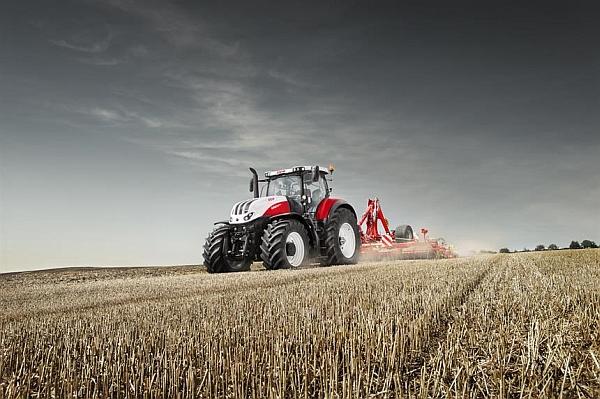Published on the 28/03/2017 | Written by Newsdesk

Precision agriculture among latest geospatial initiatives at digital earth symposium…
A new national positioning system, jointly developed by Australia and New Zealand, will be shown off at the upcoming International Symposium on Digital Earth & Locate17 being held in Sydney on April 3-6.
It will deliver far greater precision than ever before – giving farmers coordinates that are accurate to within just a few centimetres rather than the metres of current systems says Dr Peter Woodgate, CEO of the Cooperative Research Centre for Spatial Information (CRCSI).
“To adopt techniques like precision agriculture and controlled traffic farming, farmers need to be able to position equipment and sensors with about 5cm accuracy. The conference will showcase space-based augmentation systems – including Australia and New Zealand’s joint initiative – which, subject to testing, are well on the way to achieving that.”
Woodgate is predicting that the next-generation positioning system will boost Australia’s economy by $73 billion or more over the next 20 years.
While much of this will come from higher productivity in agriculture, Woodgate and his fellow researchers – and no doubt several commercial sponsors – are also predicting business opportunities through the export of skills in the development of geospatial systems.
Advances in IoT are also a major development in agtech. But when weather tends are combined with local IoT data captured on farms – something farmers are already using today – critical economic impacts such as regional and global food shortages and their impact on prices and commodity cycles can be predicted with greater accuracy.
NASA is contributing a data set that will support such initiatives. It will be presented at a special session at the symposium where NASA scientists will be discussing their Soil Moisture Active Passive (SMAP) Observatory.
SMAP provides frequent global measurements of soil moisture from space at high spatial resolution. The SMAP measurements are being used [https://smap.jpl.nasa.gov/mission/why-it-matters/] to predict major weather events such as droughts and floods, but also to assist with productivity of crops, forecast weather and to measure the health of the world’s biosphere.
Phil Tickle, the Program and Business Development Manager at CRCSI said NASA’s SMAP data is complementing data from a range of sensors used in digital agriculture, including soil moisture probes, weather stations, and animal tracking devices.
Tickle is presenting the benefits of an online farm monitoring solution for the grazing industry. Called the NRM Spatial Hub, it provides access to 30 years of 30 metre resolution satellite data and tools for mapping, assessing and monitoring property infrastructure, land resources and ground cover. It is currently being commercialised by the CRCSI in conjunction with Meat & Livestock Australia.
These developments, including the use of unmanned vehicles and new imaging technologies, are transforming how today’s farms are managed.
But Tickle is also warning that the growth of the agtech industry has raised new issues for farmers and providers.
The supply of data from farmer-owned sensors has raised issues of data sovereignty, and who should gain from the wider benefits.
“We are seeing enormous development in digital agriculture capabilities and often farmers don’t have control of their own data,” said Tickle. “When you have sensors on farms feeding into data warehouses and generating broader benefits, why shouldn’t the farmer get a cut? And what does a farmer do if they want to change providers and their data is locked up in a proprietary system?”
The leveraging of proprietary systems for commercial benefit is hardly new in the world of IT, but it rubs counter to the co-operative nature of farming communities.
In a separate example, farmers in the United States are locked in a bitter feud with tractor maker John Deere.
The company has added firmware to many of their recent models that makes it impossible for farmers to carry out unauthorised repairs. If a tractor breaks down, an authorised mechanic has to be dispatched to the farm. However, many farmers have complained saying the time it takes for the repairer to arrive is extending their down time.
But the farmers have fought back. Using paid access to online forums in Eastern Bloc countries, they are procuring hacked firmware that bypasses the “protections” John Deere has imposed.
Let’s just hope that those hacks aren’t introducing bots designed to create a fleet of rogue tractors controlled from a basement in outer Uzbekistan.



























